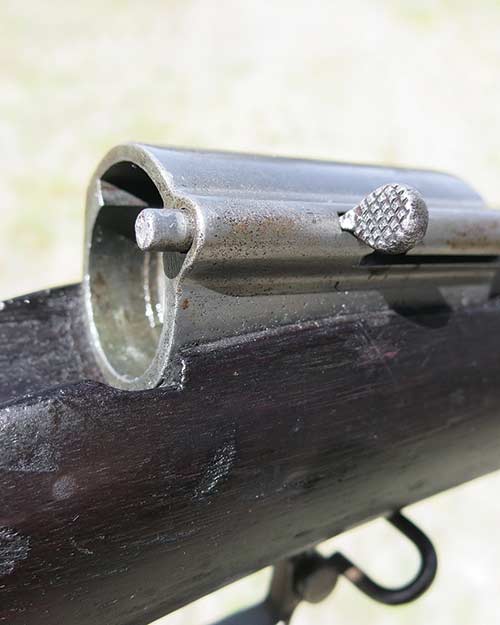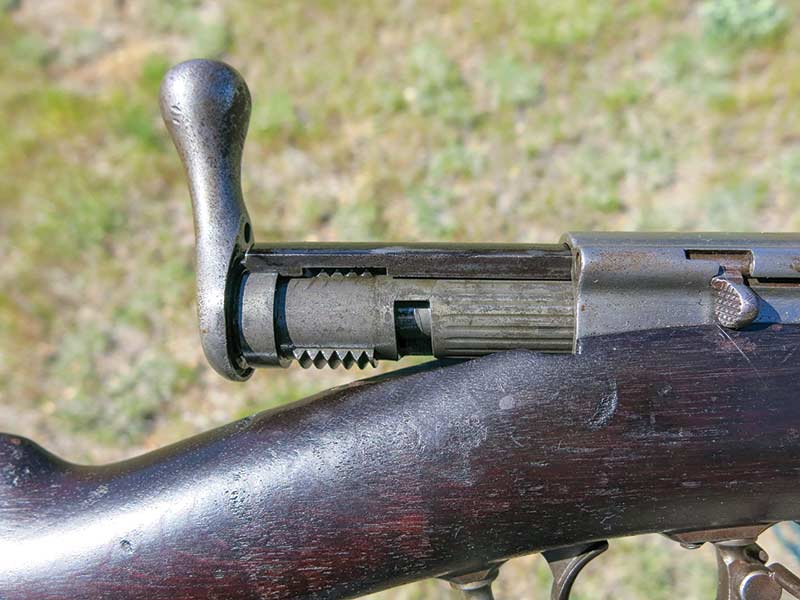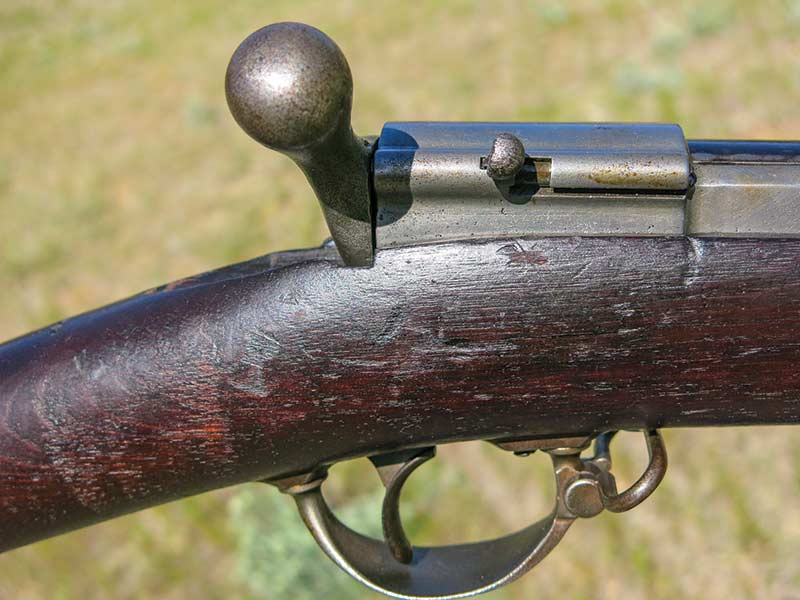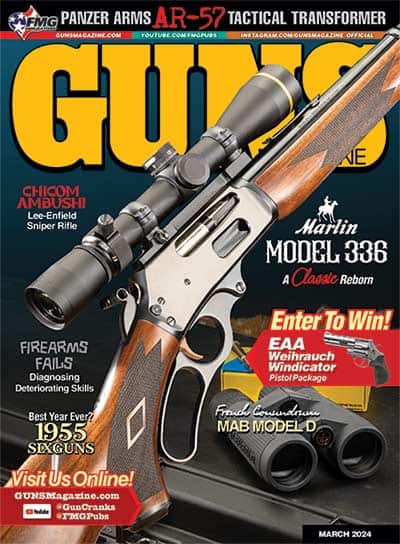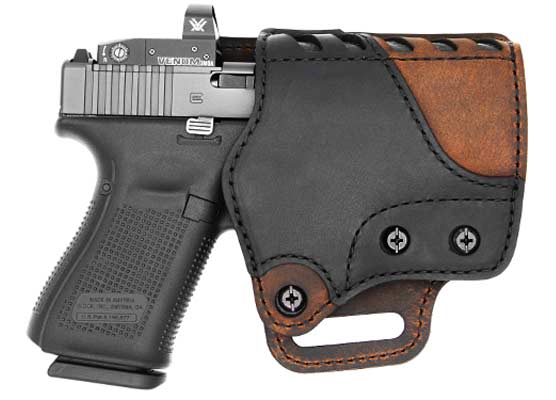The Ward-Burton
Springfield Armory’s First Bolt Action
By 1870, the Trapdoor Springfield had been around ever since 1865. Simple, rugged and very accurate, it was a successful in-house design and well received by the troops. Yet, it was dated so in 1870 the U.S. Army Ordnance Department convened a Board of Officers to evaluate other designs for the purpose of recommending a replacement.
Trial & Tribulation
Four different “Trials” models were selected to be issued to infantry, artillery and cavalry companies, largely based in the West, and engaged in the Indian Wars of the day. Three of the selected “Trials” models were familiar — the Trapdoor, the Sharps and the Remington Rolling Block. The fourth was unfamiliar and radically different. This model carried the name of Ward-Burton.
Its designer, Bethel Burton of Brooklyn, NY, was a prolific if unsuccessful inventor who found himself briefly in Federal prison for offering the Commonwealth of Virginia an advanced bolt-action, percussion-fired musket at the beginning of the Civil War.
Redesigning his bolt-action rifle to fire metallic cartridges, Burton offered his design to the military small arms trials of the 1860s ongoing in Europe and in the United States at the state level. He failed to land any contracts but he did meet Colonel (soon General) William G. Ward who sat on the New York State Small Arms Board. Colonel Ward was so impressed with Burton’s design they formed a partnership with Burton adding Ward’s name to his patent in 1869 — a very shrewd political move.
The next boot to drop is a letter from General Dyer, Chief of Ordnance. It was addressed to the Commanding Officer of the Springfield Armory indicating he would be receiving a Ward-Burton musket. Gen. Dyer requested an estimate on the cost of producing 1,000 Ward-Burton muskets and 300 carbines for the upcoming trials. Maybe a little General-to-General lobbying? Nah!
The trials of 1870-1873 had two major purposes: to evaluate how the arms performed and held up in the hands of active-duty troops and to determine the cost and complexity of their production by Springfield Armory. To the latter point, Springfield Armory licensed the production rights for the Remington Rolling Block, secured receivers directly from Sharps and completely built the Ward-Burton from the ground up. All four models were made up in lots consisting approximately of 1,000 rifles and 300 carbines and given the model designation “Model 1870,” except the Ward-Burton, which was assigned “Model 1871.”
Standards
The “Trials” cartridge was the 50-70 Gov’t issued in two loadings — the standard 50-70-450 cartridge and a lighter 50-55-430 carbine load. Springfield pieces and parts already in inventory like butt plates, sights, barrel bands, cleaning rods and bayonets were commonly adapted to the various models.
Fortunately, as Springfield’s first issued bolt-action rifle, the Ward-Burton pictured here never made it to the front lines and is virtually mint. It’s a typical musket-sized rifle of the period with a barrel length of 32.5,” an overall length of 52″, weight of 9 lbs. and as I was soon to learn, a trigger-pull of 11 lbs., 9 oz.
The heart of the Ward-Burton is the bolt and quite a bolt it is. It’s modern in design and incorporates an internal striker which is cocked on closing, a claw extractor and a spring-loaded pin ejector. It’s a rear-locking bolt carrying two sets of interrupted lugs engaging matching lugs machined into the rear bridge of the action. A nice touch, which I found fascinating for the period, is the grooved bolt body to better handle dirt and dust in the field.
The bolt handle projects at a right angle to the action while the root of the handle incorporates a hole which accepts a pin-activated safety. As pictured, the safety button is just a little wart sticking out of the side of the receiver. The button should have been much larger and beefier and was roundly criticized by the troops. In fact, not having a familiar, visual, external hammer like the Trapdoor, Sharps and Remington, the Ward-Burton was prone to producing accidental discharges in the hands of troops. Yet, if operated correctly, the safety is excellent because for the safety pin to engage the hole in the root of the bolt handle, the bolt has to be lifted slightly out-of-battery. Visually and by feel, it’s obvious when the rifle is on “Safe.”
Loading the Ward-Burton is simply a matter of dropping a round into the single-shot receiver and closing the bolt. Extraction and ejection proved reliable and strong. In spite of its atrocious trigger and coarse musket sights, the Ward-Burton proved its inherent accuracy with the 3-shot, 1.25″ group at 50 yards. The load was 11.5-grains of IMR Trail Boss and a standard 450-grain, 50-70 bullet, 20-1 temper, sized to 0.515″ and lubed with SPG. Velocity averaged 909 fps. The 11.5 grains of Trail Boss has become sort of a standard load around these parts for both the 50-70 and 45-70.
To The Field
In 1872, in batches of approximately 20 rifles, the Ward-Burton was issued to 11 artillery companies, 46 infantry companies and 11 cavalry companies. Under the terms of the Trial, the company commanders were required to report monthly to the Ordnance Department on the number of rounds fired as well as any breakages or problems with each of the trial models. The resulting remarks from the field were a mixed bag for the Ward-Burton and today we can read them on the web in the 1873 Report of the Chief of Ordnance. Here are a few samples:
Company C, 13th Infantry: “I have the honor to add that in consequence of the number of accidents occurring in using the Ward-Burton arm, the men of my company are afraid to use them.”
Company E, 13th Infantry: “A very good arm, preferable to the Remington or Sharps.”
Company C, 3rd Infantry: “Too hard on trigger. A dangerous arm in the hands of green troops.”
Company E, 2nd Cavalry: “Too complicated for cavalry service. The Ward-Burton fails often to explode the cartridge, which is caused by the firing-pin spring becoming weak. The extractor is good, but as the piece is always cocked and there are so many motions which consume time in working the gun, it is not, in my opinion, adapted for the cavalry service.”
Company F, 7th Cavalry: “For rapidity of fire, there appears to be little choice between the Ward-Burton and the Springfield, both of which excel in that respect.”
The remarks from the field about the Sharps and the Remington were about as mixed.
Staying The Course
The final decision by the Board in 1873? “We’ll keep the Springfield Trapdoor but chambered in the newer 45-70 cartridge.” They did until 1892 when the U.S. Krag-Jorgensen was officially adopted as the standard U.S. service arm.
In the context of what was occurring in the other major militaries of the day, the decision to soldier-on with the single-shot Trapdoor until 1892 is simply incredible.
By 1870, France, Germany, Holland, Italy, Russia and Switzerland had adopted a bolt-action system and three of those systems were repeaters! Holland (Beaumont-Vitali M1871). Italy (Vetterli-Vitali M1870). Switzerland (Vetterli M1869).
Fortunately, the Trapdoor-wielding U.S. did not get entangled in a foreign war. However, in the interim years, both the Army and Navy procured and field-tested a number of bolt-action, repeating rifles and carbines — the Remington-Keene, Remington-Lee, Hotchkiss and Chaffee-Reece. None was considered sufficiently superior to replace the Trapdoor as the United States’ standard service arm!
And what about Bethel Burton, our forward-looking designer? Receiving his last patent in 1905 for a machine gun, Burton never achieved his dream of seeing his designs adopted by any country.

